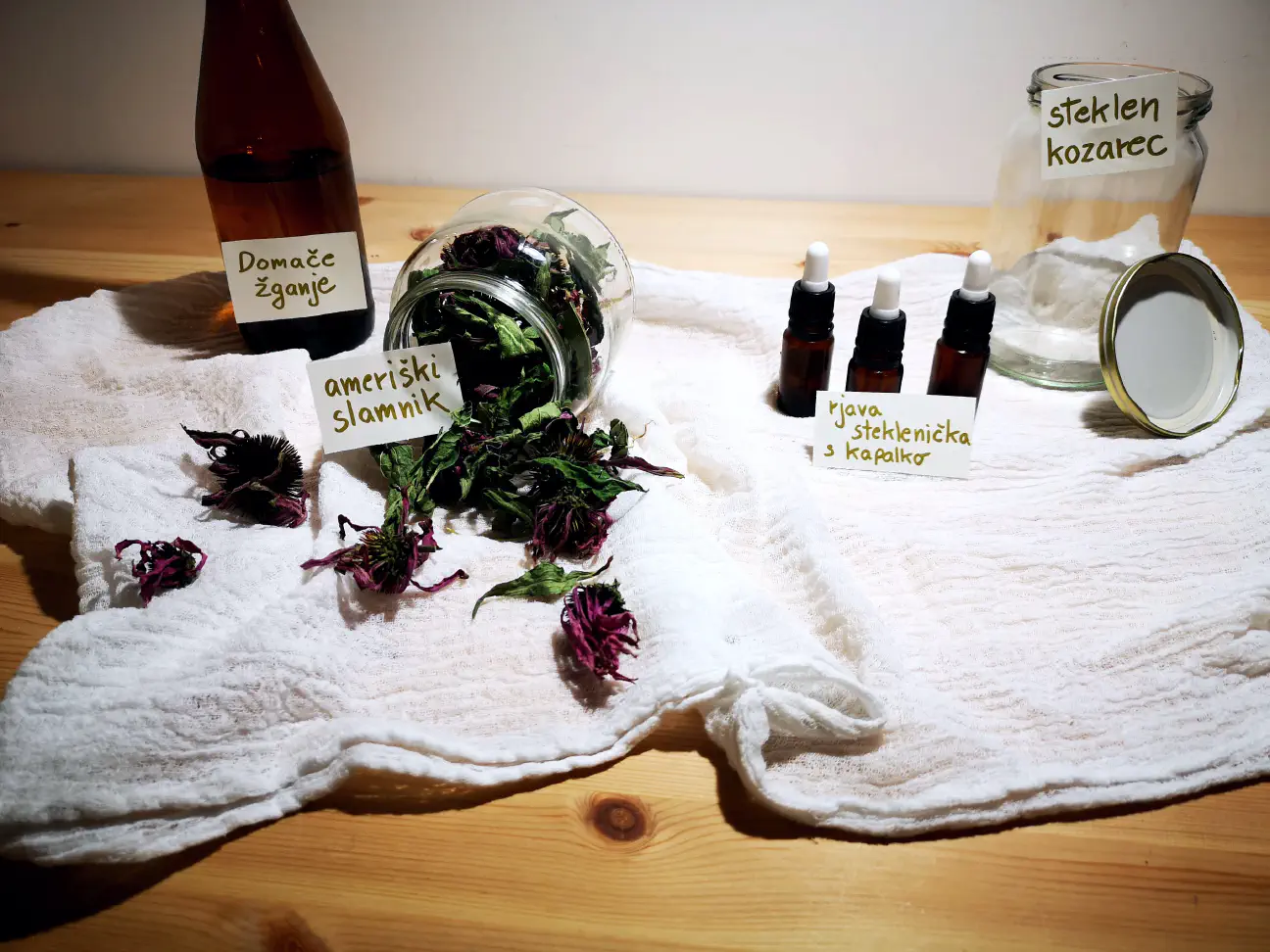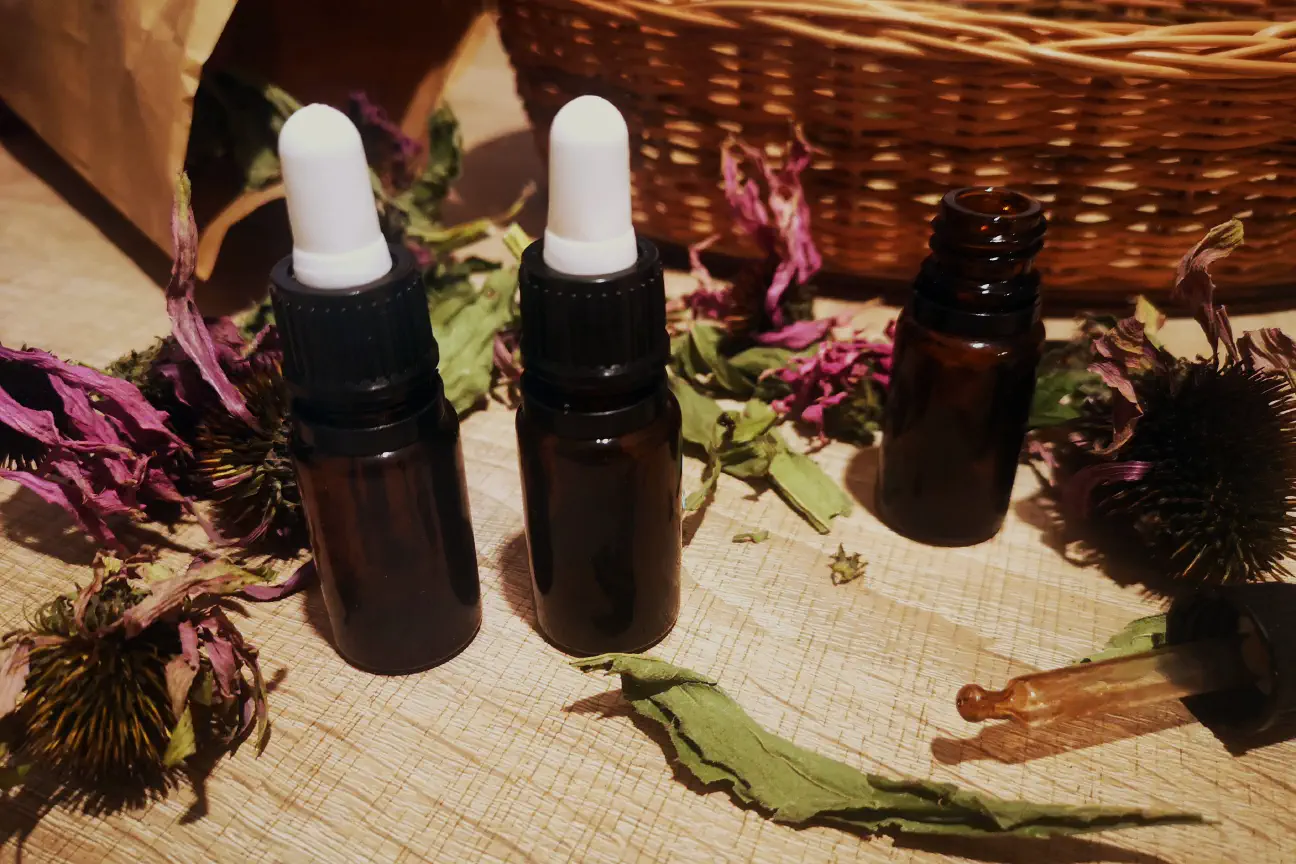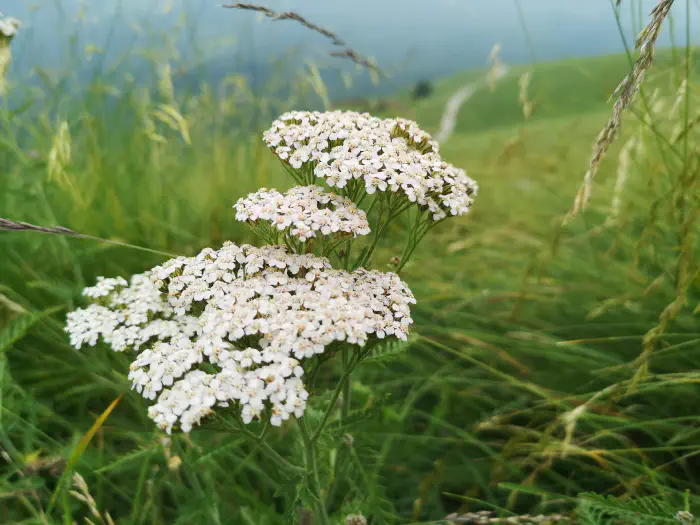Tincture: What is it? How to prepare and use it?
We will learn what tincture is, how to prepare it at home, and how to use it internally and externally. We also explain what plant you can use for the tincture.
We will learn what tincture is, how to prepare it at home, and how to use it internally and externally. We also explain what plant you can use for the tincture.
Tincture is an alcoholic extract of active ingredients from the medicinal plant. Alcohol is used as a solvent mainly because of its favorable properties in dissolving active ingredients and its ability to preserve them.
Alcohol effectively acts as a solvent. It extracts medicinal substances from herbs and plants by breaking down the plant materials and thus releasing their active compounds into solution. Therefore, tinctures contain more active ingredients than preparing only tea from the same medicinal plant.
Alcohol also acts as a preservative, ensuring a long life of the tincture. The high alcohol content preserves the active ingredients in the tincture for several years. Alcohol maintains a longer shelf life because, among other properties, it acts as an antiseptic and thus prevents the growth of microorganisms that destroy the active ingredients.
You can also make tincture at home. The next chapter explains how to prepare it.

To prepare a tincture, you need 70% alcohol, which can be bought from a pharmacy, but you can also use good quality homemade brandy with at least 40% alcohol (respect rules about distillate alcohol in your country). The choice of alcohol depends on how long the herb needs to soak. The higher the concentration of alcohol, the shorter the steeping time. It is sufficient to steep herbs for one to two weeks in 70% alcohol; in 40% alcohol, you need to steep herbs for at least one month.
Finely chop or grind the selected herbs and put them in a large jar with a wide neck and a screw cap that closes tightly. Use 200 g of dried chopped herbs or 300 g of fresh chopped herbs per 1 l of alcohol. It is essential to use the herbs that were picked at the time when they contain the most active substances.
Pour the selected alcohol over the herbs in the glass. Close the jar and shake well for at least 1 minute to eliminate any air bubbles that might breed mold. Then put it in a dark place for at least 15 days, but ideally up to a month, depending on the alcohol concentration. It is a good idea to keep the jar nearby to remind you of it, as it needs to be shaken or stirred daily.
When the soaking is finished, strain the contents and squeeze the plant parts well to extract all the liquid. Pour the resulting tincture into small dark bottles and store them in a cool, dark place. This tincture, stored properly, will last 3-4 years.
If you are making the tincture from roots, you need to consider the harvesting time. The roots of medicinal plants should be harvested in autumn or winter when they contain the most active substances. The root is also cut into smaller pieces and soaked in alcohol. The soaking should take place over 1 to 2 months.
If making the tincture from both the herb (flowers, leaves, stem) and the root of the same plant - for example, Echinacea, prepare separate tinctures and mix them in a 1:1 ratio. So make a tincture of the herb in July and another of the root in late autumn. Once both tinctures are made, mix them to obtain the most effective preparation.

Tincture intended for internal use is ingested by dropping drops of the preparation into a neutral liquid, for example, water. The recommended amount of tincture varies slightly from preparation to preparation, but the most common dosage is between 15 and 20 drops in 100 ml of water or tea. How often one can take that preparation depends on the herb used to make a tincture. In general, however, it should be drunk 2-3 times a day and taken only for a certain period, but certainly not continuously. The tincture can also taken as a sprinkle on a lump of sugar.
Specific tinctures are also or only intended for external use. We use them for rinses, rubs, bath additives, or poultices. For external use, dilute drops of tincture in water, which can then be used to wash a wound, rub and massage a sore area, or as an additive to a bath. For example, the tincture-water ratio of Arnica montana, which is for external use only as it is quite strong, should be 1:10. At the same time, you can dilute most other tinctures with a tincture-water ratio of 1:5.
In principle, we can make tinctures from any plant or herb. Roots, berries, fruits, herbs, and bark are also suitable for tinctures. However, some plants and their parts are unsuitable for tinctures as they can be dangerous. Also, some plants have no scientific evidence of their therapeutic value.
Some of the most commonly tinctured plants are:
Echinacea purpurea (eastern purple coneflower) is one of the most common plants used to make tinctures. It is used to boost the immune system and also helps with flu and colds. It is essential to take breaks when using the Echinacea’s tincture. Taking the tincture for ten consecutive days is recommended, followed by a break. Scientists have shown that Echinacea has a positive effect on alleviating COVID-19 disease.
Nettle in tincture form reduces anemia, helps purify the blood, stimulates the immune system, and promotes kidney function. It also has a positive effect on prostate problems.
Achillea millefolium (common yarrow) is used to relieve respiratory, intestinal, and digestive problems (tightness and constipation). It also relieves pancreatic issues and helps with hemorrhoids and cramps during menstruation. It regulates menstruation that is too heavy or weak, increases immunity, stimulates appetite, stimulates and drains bile, and increases perspiration and the amount of urine produced.

Plantago is effective for inflammation of the respiratory tract inflammation in the mouth and throat, relieves coughs (promotes mucus secretion), and heals external injuries such as wounds, bumps, and insect bites.
Artemisia annua (sweet wormwood) has more than 20 medicinal effects. The most studied are its healing effects in treating malaria and cancer.
Tinctures can also be made from dandelion root, blackthorn, Breckland thyme, and many other medicinal plants or from combinations of several plants. A combined tincture of nettle, yarrow, Plantago, and dandelion is often seen and used for natural blood purification, stimulating metabolism, and eliminating toxic substances from the body.
Tinctures are not suitable for children due to alcohol content.
Homemade tinctures are not accurate as we do not know the exact content of the active ingredients as is known for tinctures from a pharmacy. Therefore, we recommend using only tinctures made from milder herbs, where the amount of the active ingredient consumed is not so important – it cannot be easily overdosed to harm us (as long as they are taken as recommended, of course).
If you wanted to make a tincture more professionally, you would have to follow the recipes in the apothecary books, where for each plant, the exact proportions of alcohol to parts of the plant and the strength of alcohol used for the particular plant are described.

Ana and Primož created this website for you. We love to start the day with a full cup of herbal tea, remembering a warm summer day and the way to that hill where you could smell motherwort from afar. We enjoy combining the joy of hiking, foraging, and coming home tired with a full canvas bag of herbs. The more we learn about medicinal plants, the more excited we are about their usefulness and the more we care about preserving nature and its resources.